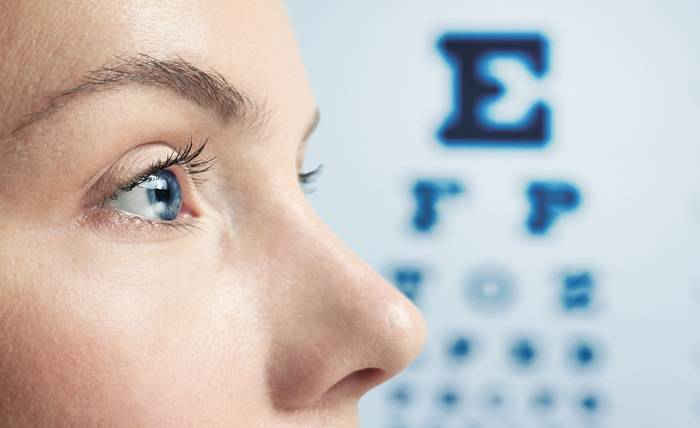What is Dilation and Why Do You Need it?

Dilation is a generic concept in geometry and mathematics that is central to many fields, such as computer science and engineering, physics, and mathematics. On the other hand, dilation of the context of eye exams is a term used for the administration of dilating eye drops that cause pupil dilation.
The pupil is the circular black aperture in the center of the iris. The drops are a medicated solution, normally phenylephrine or tropicamide, and they temporarily relax the muscles controlling the size of the pupil, making it seem larger than usual.
This enlarges the pupil, allowing more light to enter the eye and allowing an optometrist in Katy to see more of the inner workings of the eye.
Let’s get started!
What is Dilation?
Dilation is the process of expanding or enlarging an object or opening. It can refer to the widening of blood vessels to increase blood flow or the enlargement of pupils in response to light.
Dilation in eye exams uses eye drops to widen pupils, allowing doctors to better view the inside of the eye. It helps detect eye diseases early, such as glaucoma, diabetic eye disease, and age-related macular degeneration.
However, dilation can cause temporary sensitivity to light and blurry vision, so it’s crucial to be prepared for these effects. Overall, dilation provides essential insights into eye health.
Why is Dilation Necessary in Eye Exams?
Enhanced Visualization
Dilation helps the ophthalmologists to get a wider, and clearer view of the retina, optic nerve, and the rest of the internal structures of the eye. This increased visibility is quite significant in the detection of symptoms of eye diseases such as glaucoma, diabetic retinopathy and macular degeneration, when treatments are most effective.
Evaluation of Eye Health
Dilation enables comprehensive eye exams for any abnormalities, lesions or changes in the retina, and other structures that may point to underlying eye diseases or other systemic diseases.
Measurement of Refractive Errors
Dilation is a technique that helps to have a clearer view of the refractive errors, like myopia, hypermetropia, and astigmatism, as the muscles that control the shape of the lens and pupil are relaxed. Therefore, it becomes easy to determine the corrective lenses that are needed.
Monitoring of Progression
Dilation exams have a crucial role to play for people with eye conditions or risk factors for eye diseases as these individuals need dilation exams to monitor disease progress, to assess treatment effectiveness and to come to decisions about vision management and preservation.
Patient Education
Dilation gives an opportunity for an eye care provider to educate the patient regarding the significance of having regular eye exams, early detection of eye disorders, and the use of preventive measures in maintaining eye health.
The Process of Dilation in Eye Exams
- Preparation: The eye professional, usually, begins with an initial examination which helps in the determination of visual acuity, intraocular pressure, and eye’s health.
- Administration of Drops: Through the use of eye drops that are put into each eye that the patient is likely to be on an adjusted exam chair, the pupils are dilated. Drops will produce a burning or tingly effect that will, in turn, cause problems with vision.
- Waiting Period: This medicine is administered to the patient, and they are asked to wait around 15-30 minutes so that the pupils dilate completely and the medication gets absorbed fully.
- Examination: Eye care professionals conduct a comprehensive examination using specialized instruments like a slit lamp biomicroscope and ophthalmoscope to evaluate the internal structures of the eye after dilating the pupils.
Benefits of Dilation in Eye Exams
- Early Detection of Eye Diseases: Dilatation can be a valuable tool for quick diagnosis of eye diseases and the initiation of timely treatment for the prevention of vision loss and protect eye health.
- Comprehensive Assessment: Dilating the pupils makes the retina, optic nerve and other internal structures visible for closer examination, and the physician is, therefore, able to see the eye condition and function.
- Accurate Diagnosis: Dilation provides aids to visualization and allows for a close up view of the doctors of the eye so as to ascertain the precise diagnosis, prescribe appropriate treatment and to monitor the disease progression accurately.
- Patient-Centered Care: The role of dilatation exams is not limited to patient-oriented care. In addition to the patients being involved in their eye health management, they make informed decisions and consequently prioritize preventive measures.
Conclusion
Dilation is a procedurally important part of the complete eye examination, because it helps to identify and manage a variety of eye diseases. Eye care clinicians can use the examination that causes the pupil to dilate to see deeper into the eye and investigate the presence of any signs of the eye diseases, assess the overall health of the eye and develop custom treatment and management programs.
Dilation or a fundus exam is one of the paramount components of comprehensive eye care because it is necessary to preserve vision, improve the quality of life and protect the overall health.




